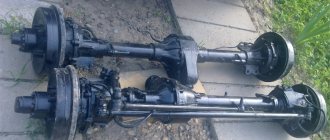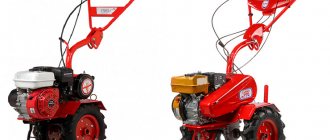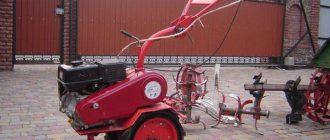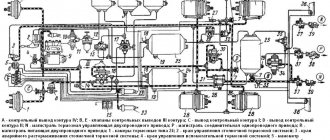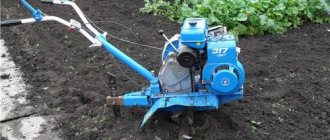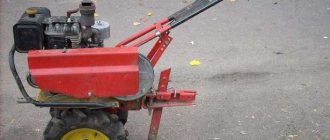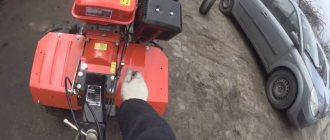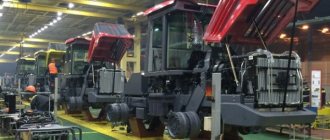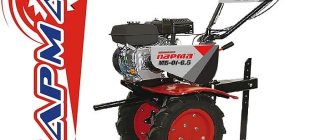- home
- Media center
- Articles
- ZIL-131 axle oil level
Menu
- News
- Articles
- Video materials
- Photo materials
- Publication in the media
- 3D tour
24.03.2021
The ZIL-131 truck is well known throughout the countries of the former Soviet Union. It is still widely used in Africa and Asia. This machine was developed in the sixties of the last century. It is distinguished by its unpretentiousness, high reliability, and versatility. Possessing a powerful engine and strong suspension, the ZIL-131 is capable of delivering cargo to remote corners of the planet and regions where there is no developed infrastructure and road network. The high cross-country ability of the model made the vehicle popular among the military. Even today, many military units use this cargo platform.
But despite its high reliability and unpretentiousness, in order for the machine to work as efficiently as possible, it requires special maintenance. For example, an important issue here is the required oil level for the ZIL-131 bridge. Below in this article we will look at how often you need to inspect your car’s suspension and what types of technical fluids should be used for maintenance.
Malfunctions
Causes of malfunctions
The rear axle gearbox is a complex mechanism consisting of a large number of elements. Failure of any one of them can lead to failure of the entire system.
- System overload. One of the most common reasons for failure of the rear axle gearbox is the frequent excess of the required load on the vehicle. For example, when towing heavy vehicles or other loads. During towing, the load on all elements of the system increases significantly.
- Play in crosspieces. Many motorists note that after 5-6 years of using the car, play appears in the crosspieces. This occurs due to increased engine detonation, unregulated ignition and the resulting shocks and shocks. Therefore, during repairs, they carry out diagnostics of all elements of the chassis and do not limit themselves to replacing the transmission mechanism.
- Lack of lubrication. If there is no oil in the rear axle gearbox, it may jam due to overheating. Steel parts may burst or teeth on gears may break. To avoid such problems, it is necessary to keep the lubricant level under control.
- Production of bearings located in “stockings”. This malfunction appears after many years of using the car. It can cause bending of shafts and destruction of gears. As a result, the rear axle gearbox will not be suitable for repair.
Signs of trouble
You will recognize problems associated with the operation of the rear axle gearbox by the characteristic noise:
- Increased bridge noise. The beam may be deformed, the gears and axle shafts may be worn out, the oil level may be low, or there may be a leak. Noise that appears immediately after repair is a consequence of incorrect adjustment.
- Noise during acceleration. If noise appears when the car accelerates, it means the differential or axle bearings are worn out or damaged. Another possible reason is a lack of lubrication in the gearbox.
- Noise during acceleration and braking. If noise appears not only during acceleration, but also when braking the car, it means that the drive gear bearings are worn out or damaged. It is possible that the clearances in the final drive gears are incorrect.
- Noise when cornering. If you notice noise when turning, it means that the axle bearings in the car are faulty. Possible reasons are scoring on the surface of the satellites or their rotation being too tight.
- Knocks when starting to move. Most likely, the gap between the splined connection of the drive gear shaft and the flange has increased. It is also likely that the pinion pin hole located in the differential is worn out.
Vehicle testing
Test 1. Start driving on the highway at 20 km/h, then gradually increase the speed to 90 km/h. At the same time, listen to the sounds the car makes at different speeds. Release the throttle pedal and, without braking, reduce engine speed. Watch for changes in noise.
Replacing the oil filter
Some drivers think, why and is it necessary to replace the oil filter while filling engine oil? Experts need to answer! In car services, the filter is usually changed before adding engine oil. Additionally, it is necessary to lubricate the sealing gasket on the filter housing with oil.
Under no circumstances should the engine be allowed to be operated with an old filter. If the filter is clogged, engine oil flows past it. The oil filter becomes clogged after 10-14 thousand kilometers.
Didn't find the information you are looking for? on our forum.
Clutch and gearbox
The ZIL-130 car has a rear-wheel drive axle. It is characterized by a dry clutch and the presence of a five-speed manual gearbox, which is equipped with synchronizers. Torque is transmitted to the rear axle using a cardan shaft. This ZIL operating scheme provides better traction on any road surface.
To prevent any fluid from entering the gearbox, which could happen when driving in the rain or when wading, the gear shift knob is designed to be insulated. This is possible thanks to the presence of a rubber seal, the shape of which resembles a clamp.
Ventilation of the device is ensured by the presence of a ventilation tube. The gearbox housing is made of high quality cast iron. This made it possible to increase its service life, which is especially important in difficult operating conditions of the ZIL-130.
Adjusting the rear axle gearbox
Before repairing or replacing a part, you can adjust the mechanism. If a slight hum occurs, even at a speed of 30 km/h, you will first need to carry out a visual inspection. If during inspection all elements were intact, then it is necessary to assemble the gearbox in a certain order. The drive gear is installed first. Next, the adjusting washer and spacer sleeve are mounted.
This order allows you to achieve the correct position of all elements. Next you will need to install the bearings and flange. After this, the hardware is tightened using a wrench with a dynamometer. The special tool allows you to tighten the nut with a certain pressure without extra effort. The hardware is tightened by 1 Newton. The flange is secured using a special key that fits the grooves.
Next, you will need to put the driven wheel in place and tighten the bolts. After this you will need to start adjusting the backlash. Once installation is complete, tighten the nuts with minimal force and rotate the driven gear. If there is slight play, you will need to slightly tighten the hardware. Backlash is required, as it is a reserve for heating the gearbox during movement to prevent destruction of parts.
At the final stage, you will need to check the distance between the heads of the bolts securing the nuts. For this, it is better to use a caliper, since accurate numbers are important when measuring. After taking measurements, you need to slightly tighten the nuts. It is better to tighten it by one to one and a half grooves. Next, you will need to measure the distance between the hardware again. Normally, the distance changes by 1.5-2 mm. The gear should have a slight play after which the adjustment is considered completed.
Bridge repair
During operation of the truck, oil should be periodically added to the crankcase and replaced with a new one (according to the service card). There is a grease nipple in the steering knuckle housing. Lubricant is filled until the substance appears from the control hole on the bottom of the support. After this, the hole is closed with a protective plug. When replacing lubricant, parts must be washed.
Repair of the drive axle is carried out in case of breakage or excessive wear of gears or bearings, as well as steering knuckles and hinges. When assembling the ZIL rear axle, it is necessary to ensure the required tightening force for the nuts. A similar requirement applies to other transmission components. In this case, it is important not to overtighten the threaded connections, since the bolts may break or the threads cut inside the crankcases may break.
In case of severe damage, it is recommended to install a new unit. The price of the front axle without mileage is about 25 thousand rubles. Used units removed from disassembled trucks are estimated at 10-14 thousand rubles.
Gearbox device
The rear axle gearbox is involved in transmitting engine power to the wheels. The main components of the gearbox are: main gear (MG) and cross-axle differential. With the help of a gearbox, the rotation speed changes when transmitting force from device to device. The design of the gearbox is almost the same for different vehicles.
The gearbox consists of the following parts:
- driving and driven gears;
- direction pin;
- oil seals;
- drum;
- bearings and their fastenings;
- locking plate;
- breather;
- shank and many other parts.
The main gear consists of 2 gears: drive and driven. Due to the fact that they are in hypoid engagement, the gear teeth have good longitudinal sliding. This extends the service life and reduces operating noise of the gearbox. The engine power is transmitted first to the drive gear and then to the driven gear. Thanks to this pair, the magnitude of the moment and its direction change.
GP can be single or double. It serves to transmit engine torque to the wheels. Double gears are divided into central and spaced. In double ones, the main load falls on the system elements; they have a large gear ratio and have a simple design. Staggered gears can increase ground clearance, but are more complex in design while being more compact and efficient.
Single gear can be:
- cylindrical. In this case, the gears are in the same plane and have maximum efficiency;
- hypoid. It has light weight, smaller overall dimensions and average efficiency;
- conical In this case, the gears are located perpendicular to each other, so the structure takes up a lot of space. Has high efficiency;
- worm It is compact, operates silently, but has the lowest efficiency.
The most common is hypoid transmission. Upon closer inspection of this gear, you can see that its teeth are located at a slight angle to each other. This places less stress on the teeth and ensures quiet and smooth operation.
The cross-axle differential works in tandem with the main gear. It includes the driven gear, axle gears and satellite gears. Through the driven gear, engine power is transmitted to the axle shafts, which transmit it to the wheels. Thus, the differential serves to distribute power between the axle shafts, allowing them to spin at different speeds when changing direction. This principle is applied to rear-wheel drive vehicles. This design has shown reliability and ability to work in the most difficult conditions.
Malfunctions
Causes of malfunctions
The rear axle gearbox is a complex mechanism consisting of a large number of elements. Failure of any one of them can lead to failure of the entire system.
- System overload. One of the most common reasons for failure of the rear axle gearbox is the frequent excess of the required load on the vehicle. For example, when towing heavy vehicles or other loads. During towing, the load on all elements of the system increases significantly.
- Play in crosspieces. Many motorists note that after 5-6 years of using the car, play appears in the crosspieces. This occurs due to increased engine detonation, unregulated ignition and the resulting shocks and shocks. Therefore, during repairs, they carry out diagnostics of all elements of the chassis and do not limit themselves to replacing the transmission mechanism.
- Lack of lubrication. If there is no oil in the rear axle gearbox, it may jam due to overheating. Steel parts may burst or teeth on gears may break. To avoid such problems, it is necessary to keep the lubricant level under control.
- Production of bearings located in “stockings”. This malfunction appears after many years of using the car. It can cause bending of shafts and destruction of gears. As a result, the rear axle gearbox will not be suitable for repair.
Signs of trouble
You will recognize problems associated with the operation of the rear axle gearbox by the characteristic noise:
- Increased bridge noise. The beam may be deformed, the gears and axle shafts may be worn out, the oil level may be low, or there may be a leak. Noise that appears immediately after repair is a consequence of incorrect adjustment.
- Noise during acceleration. If noise appears when the car accelerates, it means the differential or axle bearings are worn out or damaged. Another possible reason is a lack of lubrication in the gearbox.
- Noise during acceleration and braking. If noise appears not only during acceleration, but also when braking the car, it means that the drive gear bearings are worn out or damaged. It is possible that the clearances in the final drive gears are incorrect.
- Noise when cornering. If you notice noise when turning, it means that the axle bearings in the car are faulty. Possible reasons are scoring on the surface of the satellites or their rotation being too tight.
- Knocks when starting to move. Most likely, the gap between the splined connection of the drive gear shaft and the flange has increased. It is also likely that the pinion pin hole located in the differential is worn out.
Vehicle testing
Test 1. Start driving on the highway at 20 km/h, then gradually increase the speed to 90 km/h. At the same time, listen to the sounds the car makes at different speeds. Release the throttle pedal and, without braking, reduce engine speed. Watch for changes in noise.
Test 2: While driving at 100 km/h, shift the lever to neutral, turn off the ignition and roll freely until it comes to a complete stop. Watch the noise change at different deceleration rates.
Test 3. The car is stationary, with the hand brake on. Start the car engine and, gradually increasing the speed, listen to the noise that arises. If you hear the same noise as during test No. 1, then the source is not the gearbox, but other components of the car.
Test 4. If the noise detected in test No. 1 was not repeated in tests No. 2 and No. 3, then it comes from the gearbox. To finally verify this, lift the rear wheels of the car, start the engine and shift into fourth gear. This will allow you to make sure that the source of the noise is the gearbox, and not the suspension or body.
see also
- Pre-trip inspection of the car by a mechanic
- Filling volumes of gazelle business umz 4216
- How to register with government services to obtain a driver's license
- Is it possible to mix red antifreeze with green?
- How to find out about the seizure of a car by state number
- Calibration of DTV from DTOZH
- Operating manual Lancer 9 Mitsubishi
- Cold welding photo
- How to properly apply liquid glass to a car
- How to properly tighten the cylinder head of a VAZ 2109
- World car speed record
Rear axle gearbox - how to provide timely assistance? (video)
The gearbox design of the middle axle is similar to the design of all truck axles. It differs in design from the front axle gearbox only in that the front axle and its gearbox are equipped with control devices. This unit in the car design is quite difficult to maintain and repair. Let's look at this question in more detail.

